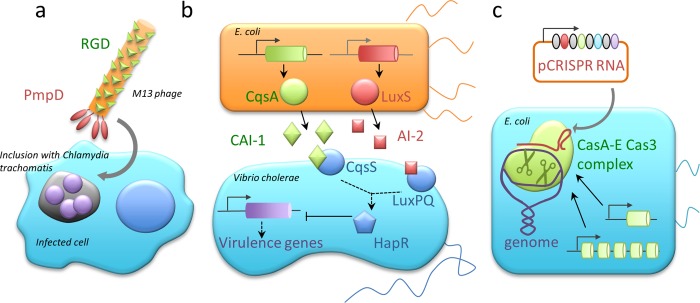Figure 2.
Biosynthetic devices for the treatment of infectious diseases. (a) Engineering bacteriophages against pathogenic bacteria. M13 phage was engineered for enhanced mammalian host cell internalization by fusing two functional peptides, RGD and PmpD, to the coat proteins of the phage.43 (b) Engineering commensal bacteria against pathogenic bacteria. E. coli strain Nissle 1917 expressing autoinducer 2 (AI-2) was engineered to express cholera autoinducer 1 (CAI-1), both of which are molecules synergistically coordinating quorum sensing in Vibrio cholerae. Through a signal transduction cascade, CAI-1 and AI-2 inhibit the expression of virulence genes in V. cholerae.44 (c) Type I-E CRISPR/Cas endonuclease system was engineered for cytotoxicity against target bacteria via site-specific introduction of a double strand break in the genome. CRISPR RNA was designed for homology to a target gene in a region that is unique to the strain, allowing strain-specific removal of E. coli.46

